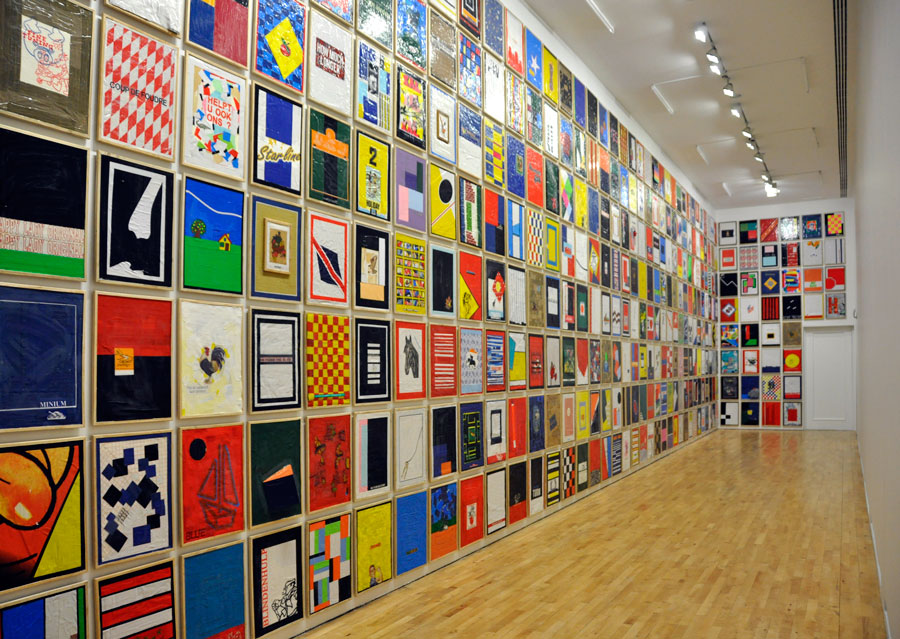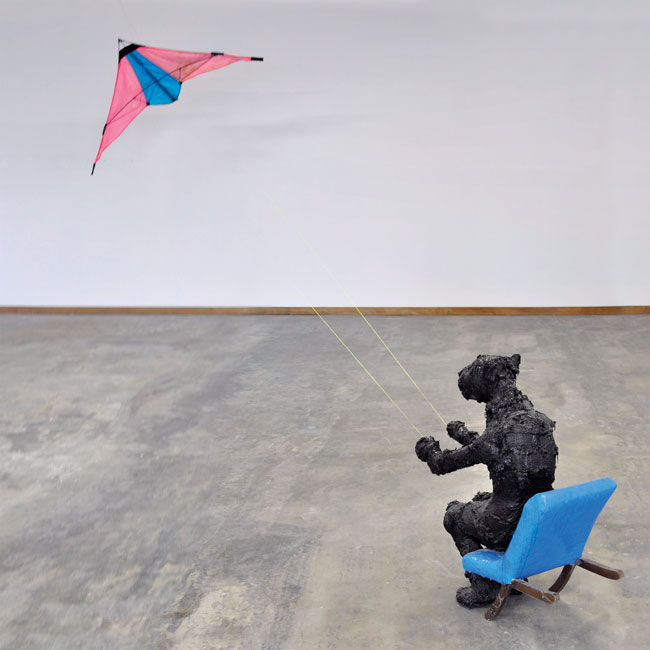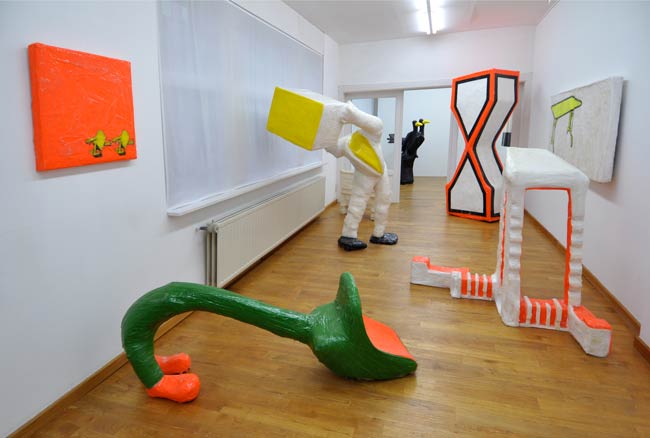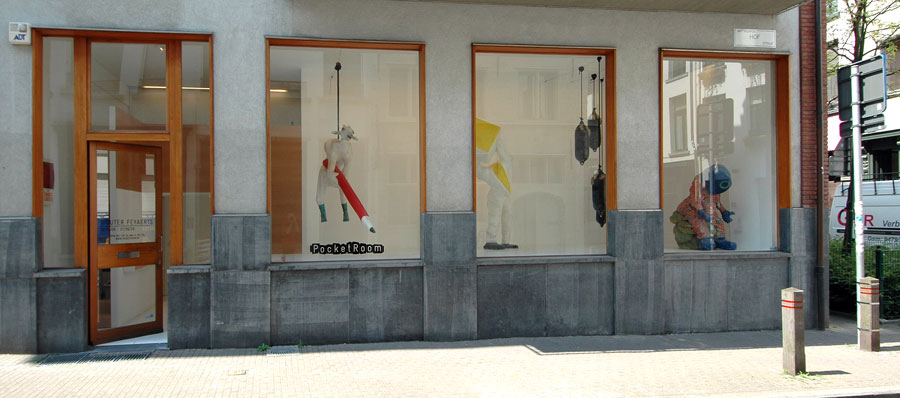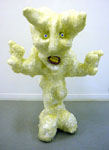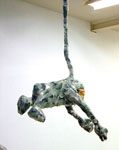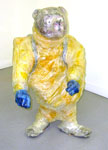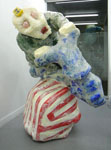zandpoortvest 10
be 2800 mechelen
t +32 15 336 336
m (b) +32 478 811 441
m (d) +32 475 477 478
Beestig?
23 OKTOBER - 13 DECEMBER 2020
Stadsfestival, centrum Damme
Stadsfestival Damme presenteert elk jaar verzamelde verhalen. De kracht van het woord en de macht van het beeld spelen de hoofdrollen. Met een combinatie van onder andere literatuur, poëzie, beeldende kunst, fotografie, filosofie, erfgoed, natuur en gastronomie brengt Stadsfestival Damme een belevingsfestival voor jong en oud. Damme geeft je zo graag tijd voor onthaasting, ontdekking en ontmoeting.
Met deelname van ondermeer Wouter Feyaerts en Johan Creten.
Antwerp Art Weekend 16 - 19 mei 2019, in Antwerp Art paviljoen @ MAS museum
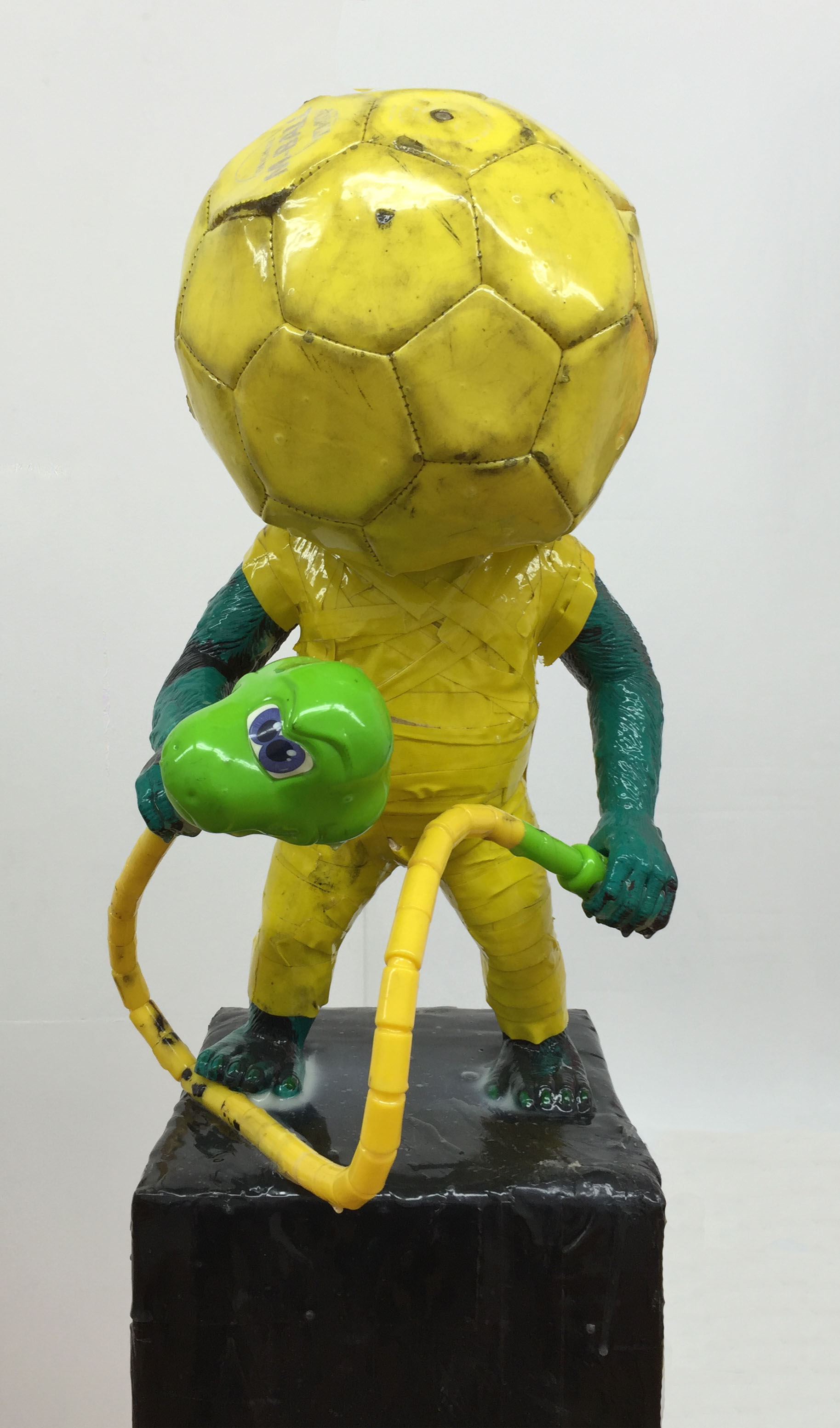
Feed the Flame, 2014, action figure, lederen voetbal, colsonband, plastiek, hout, verf, duct tape, boekbinderslijm, 166 x 27 x 25 cm
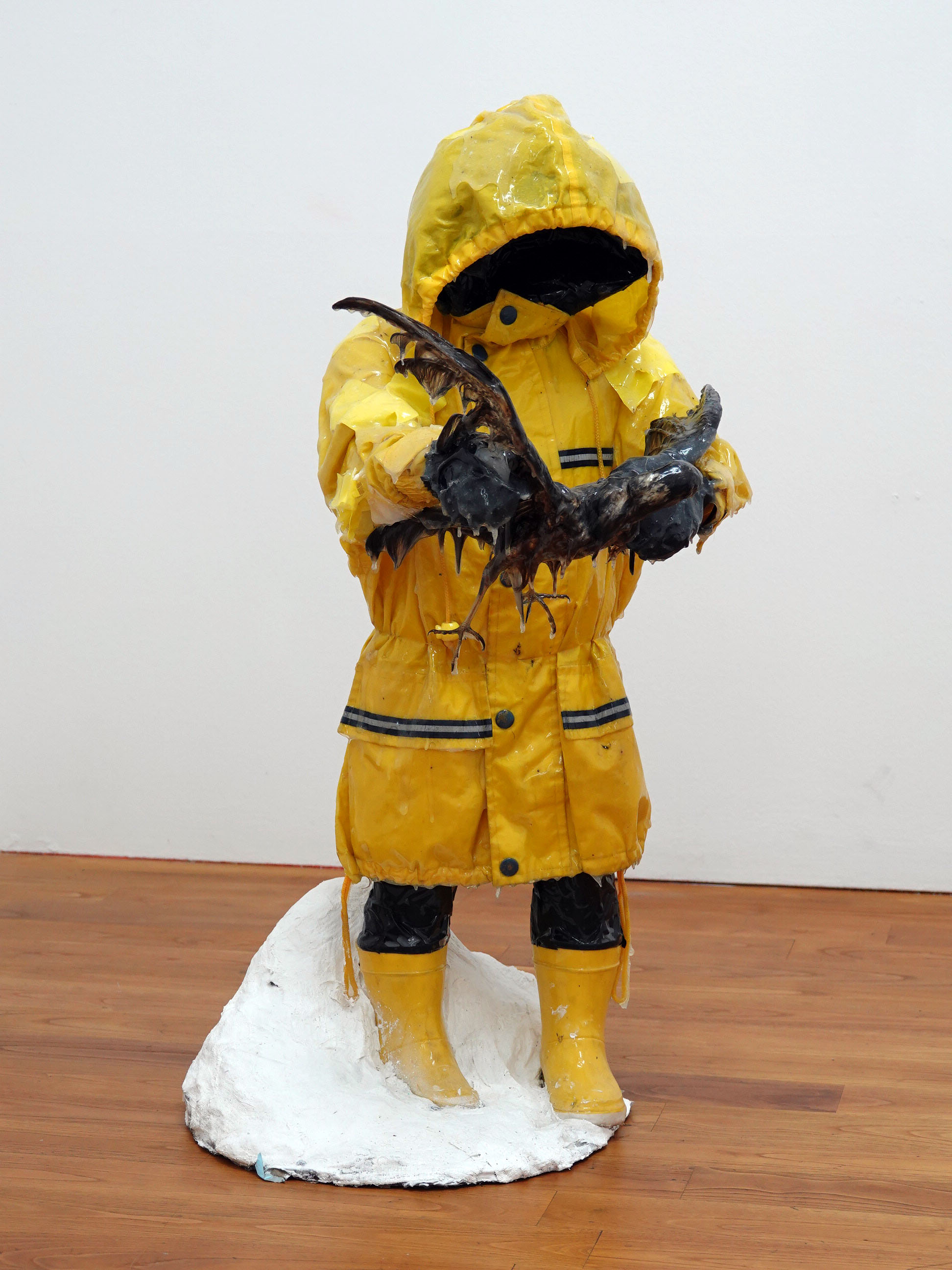
Billie & Elvis, 2017, mixed media, 89 x 41 x 50 cm
Friendly Fire, galerie Transit, 13.05 - 24.06.2018, opening Sunday May 13, 3 - 6 pm
Dear Transitters,
It is good that you are planning an exhibition of my work right now. I have, in the meantime, finished a series of new works.
I understand your request for an accompanying text. It seems telling of this time or perhaps it is even characteristic of man as a species, to have meaning conveyed.
Yet in the transit zone between my studio and the gallery this also raises many considerations.
What is the function of this kind of text? Why would the visitor need this? What is the meaning of such a discourse about my work?
Often it comes down to the fact that words are conjured up to legitimize my work, to make it understandable, susceptible and bite-sized under the guise of 'situating' it. It strikes me that words such as 'exciting' or the horrible 'interesting' then tend to appear.
Every so-called exposure is quickly becoming a game of 'hide-and-seek'. I wonder if my work needs such permits to be allowed into the world.
Everything has its laws. But I do look with some suspicion at the tendency to make everything unambiguous and understandable. An accompanying text, the name itself already says it. The text that takes you by the hand. Perhaps the viewer needs it. Perhaps my work would benefit from it. It's possible. Collecting points of view can be quite enriching.
But for this project I think that an accompanying text is a false cognitive holdfast that prevents the conveyance of what can be experienced.
If a text is needed then this mail can be the text.
The future is laughing at and with us, boys, that's promising.
We'll see each other in any case next Friday for the transport.
Friendly Fire,
Wouter

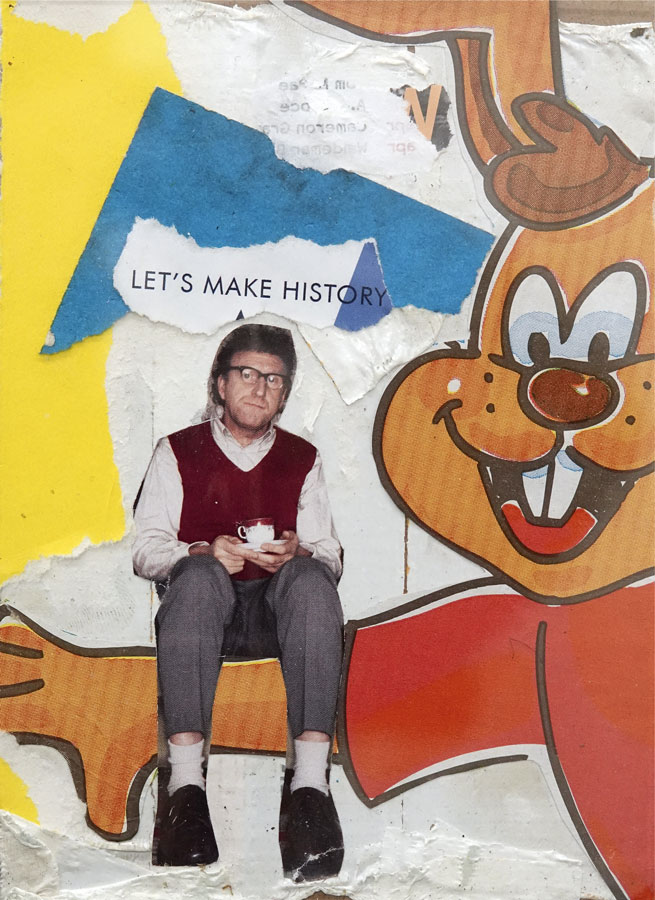
LET'S MAKE HISTORY, 2018, collage, 18 x 13 cm
Wouter Feyaerts - MEMBERS ONLY - Mei 2017
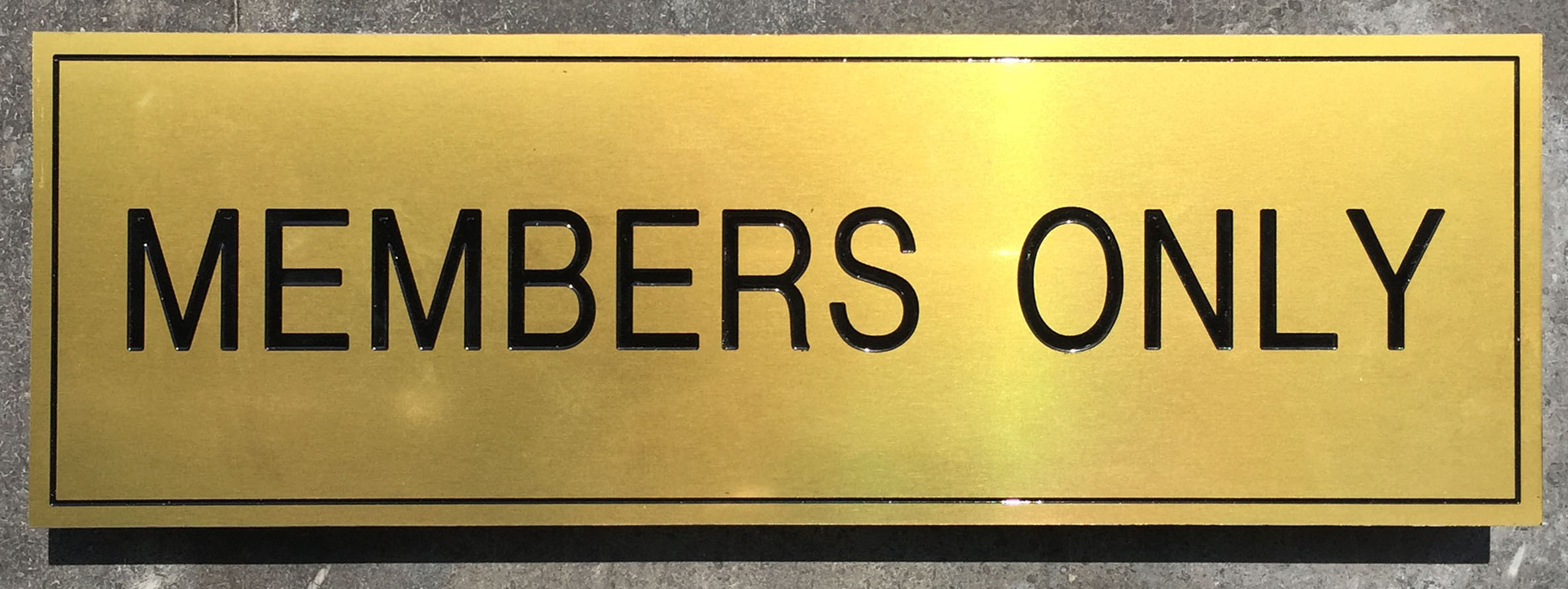
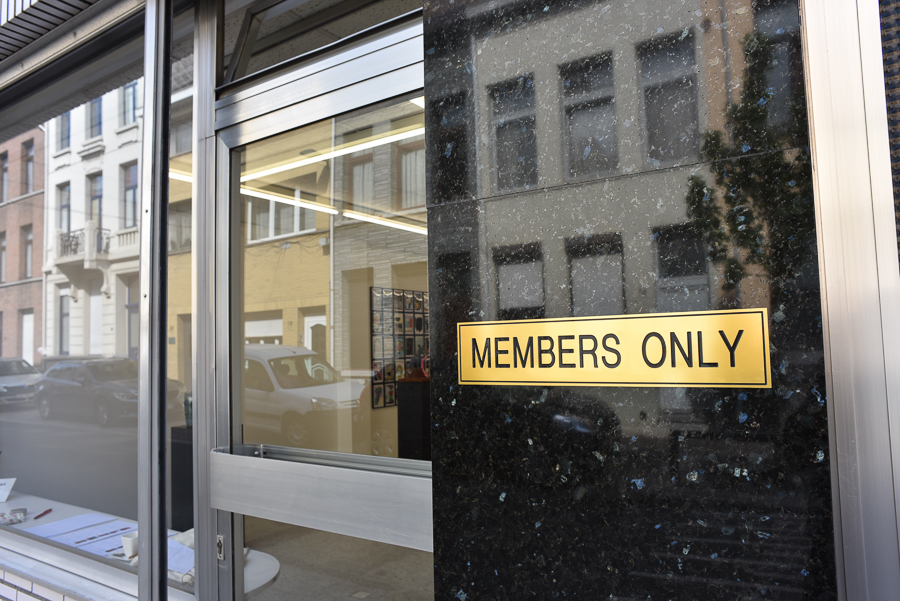
in galerie S&S in Antwerpen, Gyselsstraat 60, 2140 Antwerpen, vr & zat van 14 - 18 uur of na afspraak 03.235 55 56
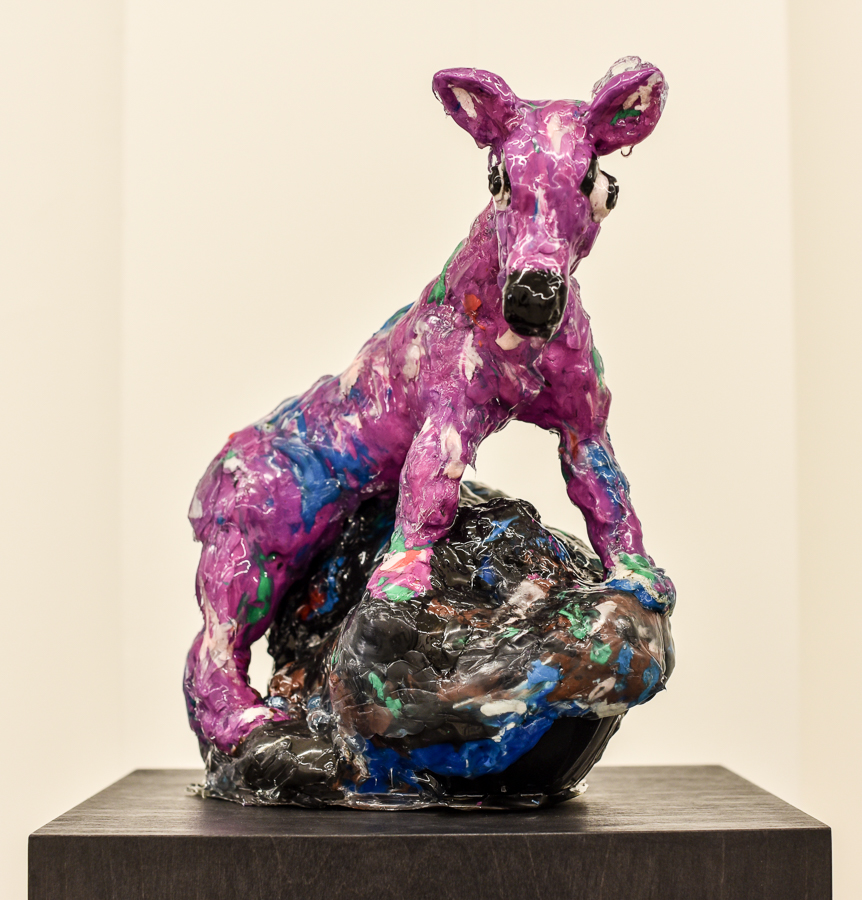
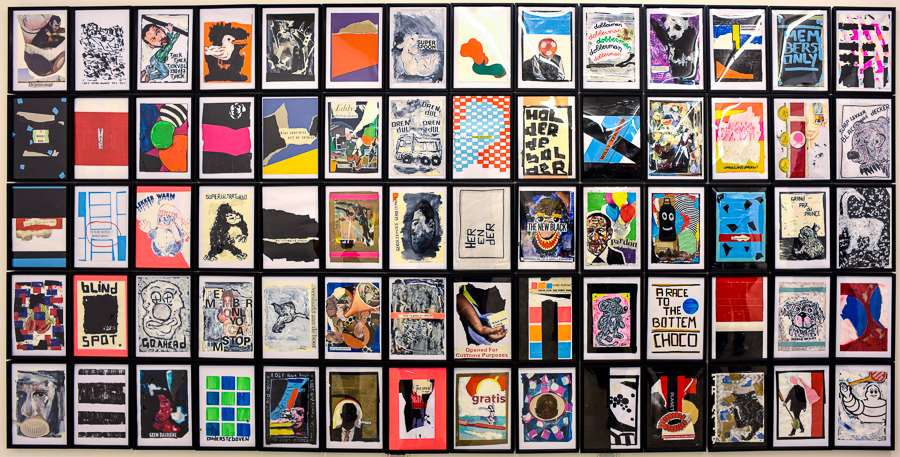
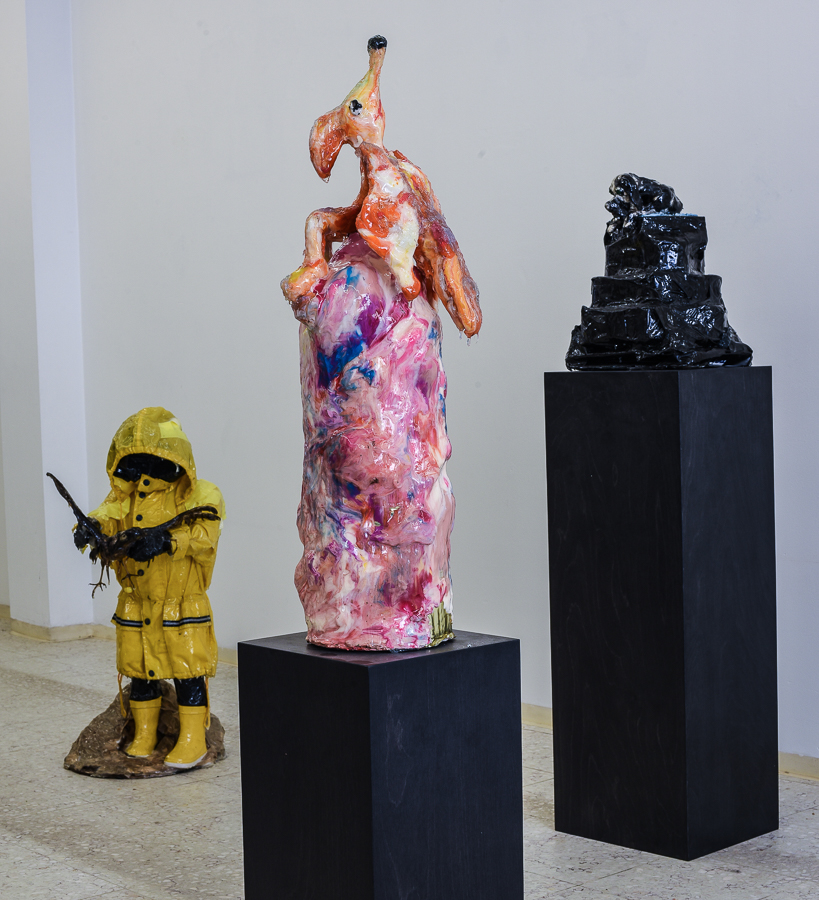
Wouter Feyaerts' beelden in Puurs
The Adventures of Captain Bear and the Happy Few | 22.11.2015 - 10.01.2016
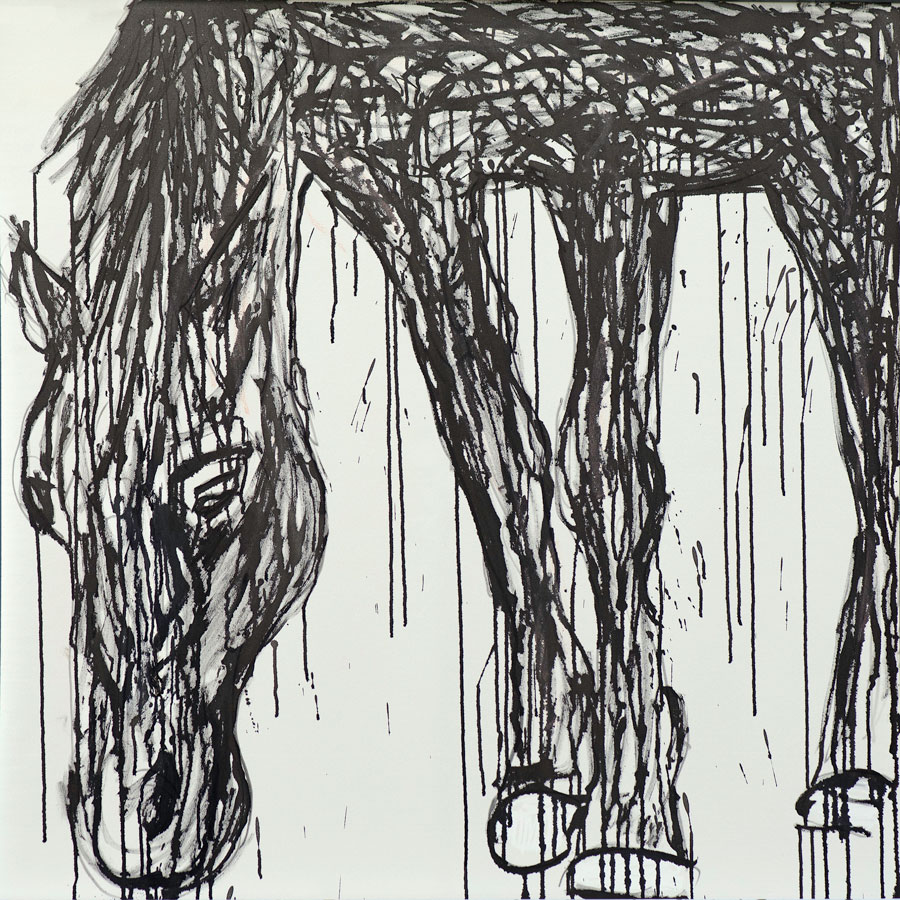 Hercules [se recule], 2015, chinese inkt op projectiescherm, 123 x 123 cm
Hercules [se recule], 2015, chinese inkt op projectiescherm, 123 x 123 cm
nederlands |
english |
Wouter Feyaerts (°1980, Brasschaat) maakte zijn debuut in de kunstwereld met kleurrijke sculpturen van groteske dieren en cartoonachtige figuurtjes die in elkaar zijn gestoken met karton, plakband en piepschuim. Maar ook zijn 'grafisch werk' getuigt van een sculpturale dimensie. Voor zijn expo in de Kunst- Nu ruimte in het S.M.A.K. toonde hij maar liefst 452 plakkaten, variaties op eenzelfde formaat, waarin hij fragmenten uit reclames en plastiek draagtassen samenbracht in kleurrijke composities in tape. Ergens tussen een collage, sculptuur en schilderij. Voor zijn huidige expo bij Galerie Transit heeft Feyaerts zich geen beperkingen qua formaat opgelegd. Hij gaat verder op hetzelfde elan van de plakkaten, even radicaal als voordien, maar gunt zichzelf meer vrijheid. Opnieuw put hij vrolijk uit de zogenaamde 'populaire cultuur', of het nu gaat om stripfiguurtjes of logo's van consumptiegoederen. Maar hij verwijst evengoed naar het canon van de kunstgeschiedenis. Zijn werk houdt zich dan ook op in de schemerzone tussen hoge kunst en populaire cultuur. Dat blijkt al uit de titel van de expo: 'The Adventures of Captain Bear And The Happy Few'. Het bonte gezelschap dat Captain Bear heeft opgetrommeld - onder andere een cowboy met grote snor, een vrolijke pelikaan en lachende octopus - wil als een narrenschip de maatschappelijke orde op de korrel nemen en wat als waardeloos beschouwd wordt weer belang toekennen. Het werk van Feyaerts komt verrassend fris en kleurrijk over. Als een vorm van Pop Art, maar dan minder afgelikt en gestroomlijnd dan de Amerikaanse versie. Feyaerts gaat voor een DIY- variant om zich niet te hoeven meten aan de kunstgeschiedenis. Hij maakt geen gebruik van nobele materialen zoals brons, marmer of olieverf, maar tape en plastiek draagtassen. Onderschat, goedkoop wegwerpmateriaal. Hij bricoleert zijn eigen versie van een canvas of sculptuur. Zijn oeuvre is dan ook één grote assemblage, over de jaren heen samengekleefd met kilometers tape waarmee hij ondertussen de wereldbol zou kunnen inpakken. De kunstenaar experimenteert ook vaak met de drager. Zo maakt hij opvallend vaak gebruik van tafelbladen, maar ook dozen, wijnkisten, fruitkartonnen en ga zo maar door. Neem nu het werk 'In eigen nat'. Feyaerts gebruikt geen canvas maar een tafel die hij aan de wand heeft vastgemaakt. Bovenop het tafelblad dat versierd is met dansende koppeltjes heeft hij een groene inktvis gekleefd in tape naar een afbeelding uit een kleurboek. Het opschrift 'in eigen nat' dat hij uit een verpakking van conserven heeft geknipt, maakt zijn gelaagde compositie af. Feyaerts is dan ook een veelvraat die alles verzamelt wat hij tegenkomt. De tsunami van beelden, reclames en slogans absorbeert hij als een spons. Met het overschot van onze consumptiemaatschappij maakt hij werk dat visueel rijk en gevarieerd is. Hij neemt zijn bronnen echter niet klakkeloos over, maar gaat die verknippen, versnijden, herkadreren en soms ook wegkrassen. Hij voegt er lagen aan toe, overgiet het geheel met boekbinderslijm, wat een aparte, glanzende textuur oplevert. Een uitgekiende compositie van vorm, kleur en materiaal. Feyaerts bouwt het geheel laag na laag op, als een metselaar die een huis bouwt. Hij gaat daarbij eerder te werk als beeldhouwer dan als schilder. De dieptewerking is dan ook cruciaal, waardoor men het werk met eigen ogen moet zien en die ervaring niet vervangen kan worden door een reproductie. Poëzie is wat verloren gaat in vertaling, schreef iemand ooit. Zou kunst dan hetgeen zijn wat verloren geraakt in een reproductie? Sam Steverlynck |
Wouter Feyaerts (b.1980, Brasschaat, Belgium) made his debut in the art world with colourful sculptures of grotesque animals and cartoon-like figures that are pieced together with cardboard, tape and Styrofoam. This sculptural dimension is evident in his 'graphic work' as well. For his exhibition in the Kunst-Nu (Art-Now) space at the S.M.A.K., he presented no less than 452 placards, variations on a similar format, in which he brought together fragments of advertisements and plastic bags in colourful compositions made with tape. Works that hover somewhere between collage, sculpture and painting. For his current exhibition at Galerie Transit, Feyaerts has imposed no size restrictions upon himself. He continues in the same vein as the previous placards, just as radical as before, yet gives himself more freedom. Here, again, he cheerfully draws from so-called 'popular culture', whether it be comic characters or logos of consumer goods. Yet he just as easily refers to the canon of art history. His work exists in the twilight zone between high art and popular culture. This is already evident from the title of the exhibition: The Adventures of Captain Bear And The Happy Few. Like a ship of fools, the motley crew Captain Bear has drummed up – including a cowboy with big moustache, a happy pelican and a smiling octopus – aims to lampoon the social order and give new importance to that which is considered worthless. The work of Feyaerts is surprisingly fresh and colourful. It is like a form of Pop Art, yet less slick and streamlined than the American version. Feyaerts opts for a DIY variant and avoids, as such, to be measured against the whole of the history of art. He does not use noble materials such as bronze, marble or oil, but rather tape and plastic carrier bags. Cheap and underrated, disposable material. He pieces together his own version of a canvas or sculpture. His work is in this sense one large assemblage, taped together, over the years, with kilometres of stick tape that could, by now, wrap around the globe. The artist also frequently experiments with the carrier. He uses table tops remarkably often, as well as boxes, wine crates, cardboard fruit boxes and so on. Take the work In eigen nat (In its own juice) for instance. Feyaerts does not use a canvas, but rather a table, which he has fixed to the wall. On top of the table top, decorated with dancing couples, he has pasted a green squid made of tape after a picture from a colouring book. The inscription 'in eigen nat' which he has cut from a canned food label, completes his layered composition. Feyaerts is also a gluttonous collector of pretty much everything he comes across. He absorbs the tsunami of images, advertisements and slogans like a sponge. Using the excess of our consumer society, he creates work that is visually rich and varied. He does, however, not simply and indiscriminately incorporate these sources into his work, but rather slices, cuts, recomposes and even sometimes scratches them. He adds layers, covers everything in bookbinding glue, creating a singular, glossy texture. A sophisticated composition of shape, colour and material. Feyaerts constructs the whole, layer after layer, like a mason building a house. His working method is rather that of a sculptor than a painter. The depth effect is in this sense crucial; the work therefore, has to be experienced first-hand and cannot be substituted by a reproduction. Someone once wrote that poetry is what gets lost in translation. Could art be that which gets lost in reproduction? Sam Steverlynck
|
Wouter Feyaerts: selected works
Wouter Feyaerts ‘ world is populated by cute Disney-like heroes. They have a sweet yet mischieveous life of their own. Made of junk materials they hold together as classical forms with humanoid features yet, they exist in a world beyond animal or human, and without boundaries of what they can stand for. Most aptly represented by 'Hold–up' a female bear-type person involved in a potentially dangerous scenario, the candylike sculpture is as seductively glistening, hilarious and cutely small in scale as it is abject and certainly not child-like.
Wouter Feyaerts (°1980, Brasschaat, België) is bijna letterlijk een plastisch denker. Zijn beeldhouwkundige denken en mentaliteit komt het meest letterlijk aan de oppervlakte in Feyaerts’ spreken en schrijven – het ‘mijmeren’ zoals hij het noemt - over zijn werk, en vormt er onmiskenbaar een cruciaal onderdeel van. Maar ook in zijn sculpturen zelf komt dit duidelijk, al is het in hun geval subtieler, tot uiting. Feyaerts’ beeldhouwwerken getuigen van een sterk vernieuwend en procesmatig materiaal-, vormen- en ruimtelijk onderzoek, gecombineerd met een aantal reminiscenties aan de populaire cultuur en de kunstgeschiedenis. Hoewel volkomen procesmatig opgevat – waarbij Feyaerts een relevant deel van zijn werkwijze aan het toeval - of beter: de inval - overlaat, vertoont zijn werk toch een uitgesproken coherent sculpturaal vocabulaire. [lees verder]
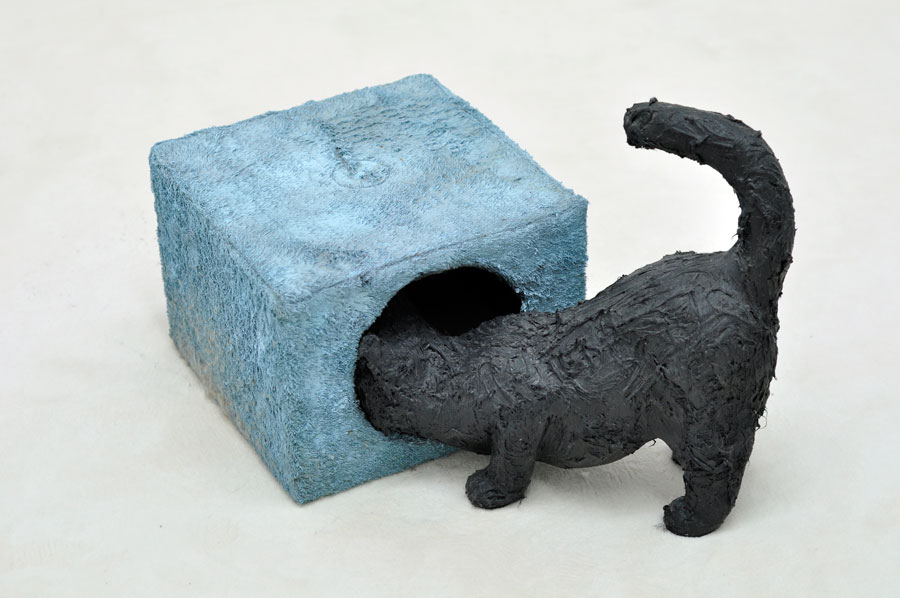
A Mans Best Friend, 40 x 40 x 50 cm, 2010, mixed media, price on request
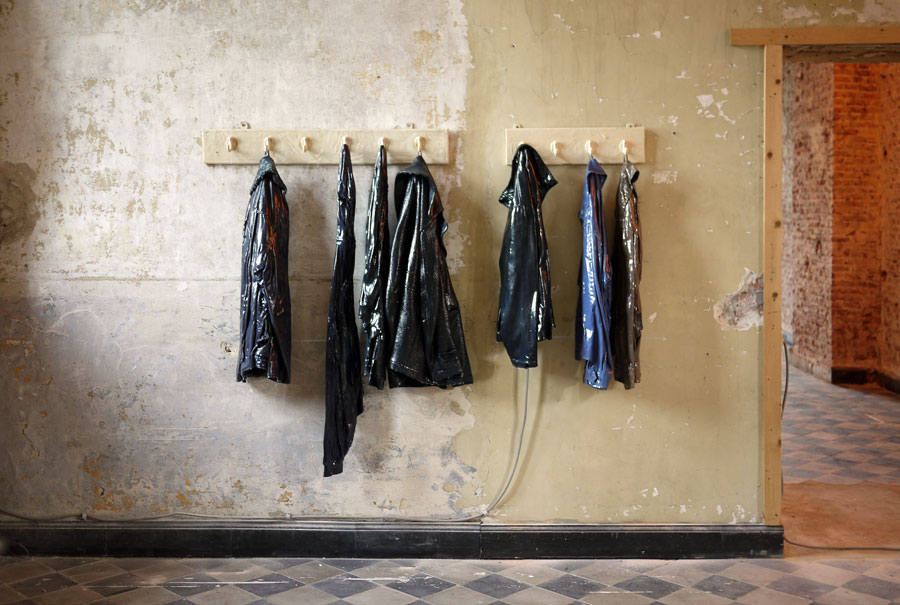
Just Hanging Around, 137 x 203 x 15 cm, 2013, mixed media installation
2011
PLAKKATEN IN S.M.A.K GENT
452 originele plakkaten, 60 x 45 x 2,5 cm, 2010/2011, 950 €
Bij elk plakkaat hoort een genummerd en gesigneerd boek 'PLAKKATEN'
2010
Zonder Pardon
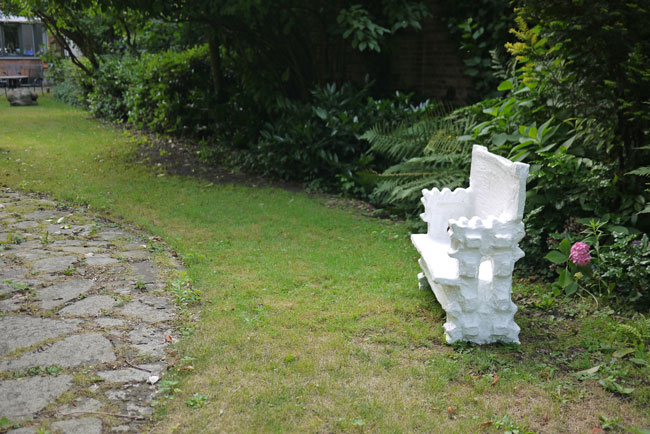
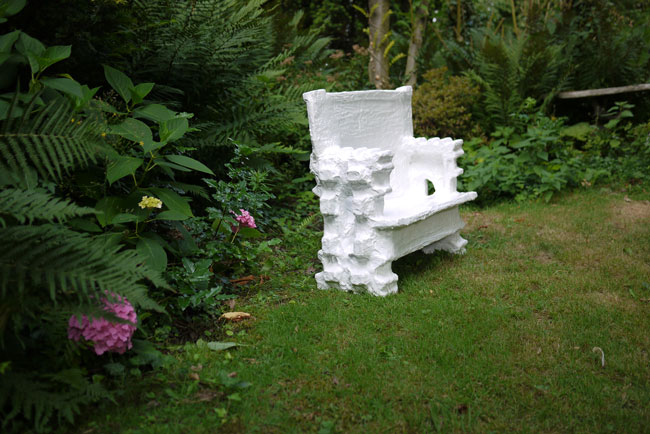
Zonder Pardon, 74 x 84 x 34 cm, 2007, brons & PU-lak, ed 2/7
Nissen langs Dijlepad, Mechelen, tijdelijke ingreep zomer 2010
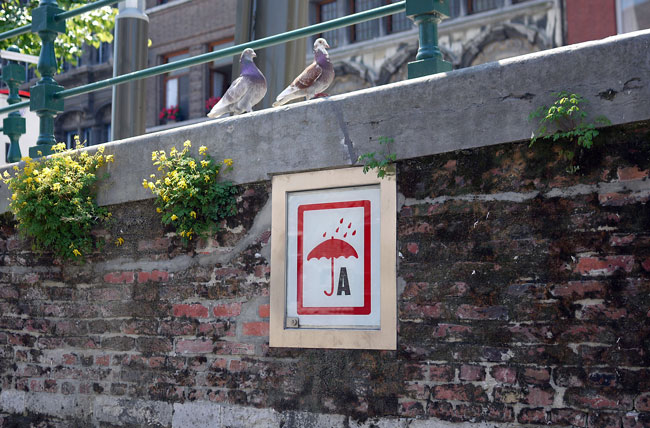
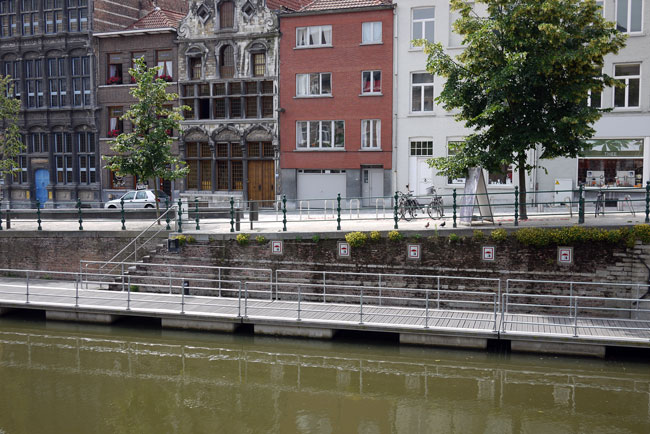
Wouter Feyaerts, solo in ArtBrussels: 'Second Hands, Second Thoughts, Second Nature'
23 - 26 april, Hal 3, Stand B-19
Second Hands, Second Thoughts, Second Nature, 90 x 42 x 89 cm, 2009, mixed media
2008
click here for works from the exhibition HOE DAN OOK, Transit Mechelen
click here for works from the exhibition LE MARCHAND DE SABLE, Pocketroom Antwerp
before 2008:
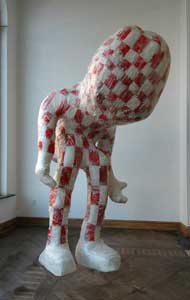 |
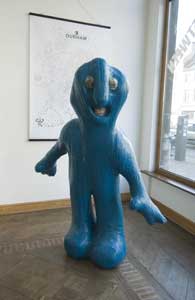 |
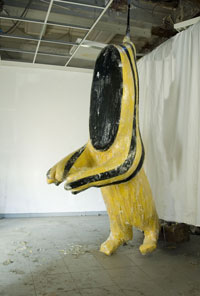 |
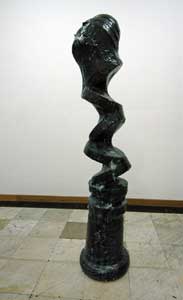 |
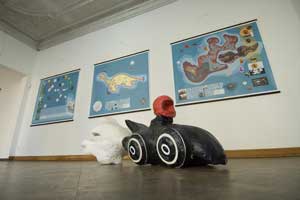 |
